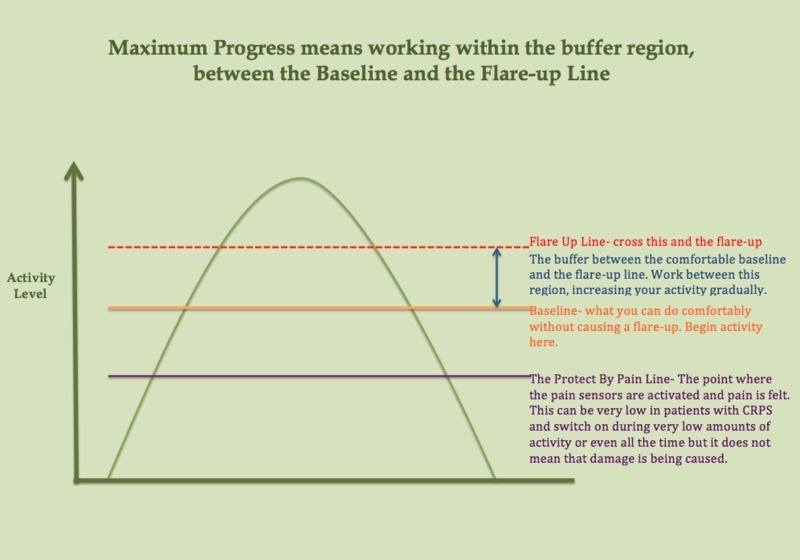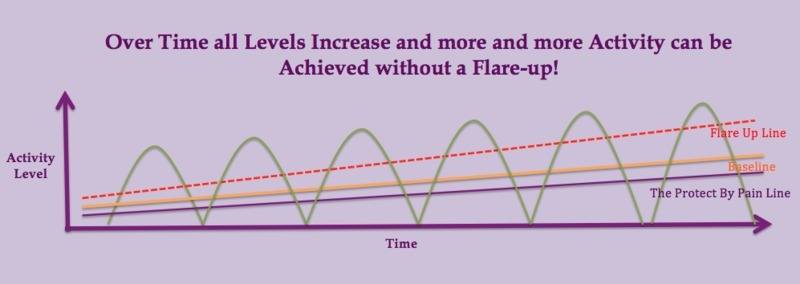Pacing and Graded Exposure
 Pacing and Graded Exposure
Pacing and Graded Exposure
The best place I have found that gives concise, explanatory, easy to understand information on this is in the 'Explain Pain' book by David Butler and G. Loimer Moseley. I openly admit I have used their ideas on this page but I definetly recommend a read. If you only read one book, this is it!

The key reasons for pacing and graded exposure is the gradual retraining of your brain and nervous system, to correct the unhelpful changes that have taken place during long-term exposure to pain.
Pacing and Graded exposure comes down to making changes to your everyday lifestyle so that you can prioritise what you want to do. In the short-term it involves much more planning to avoid situations that result in over-stressing the body and causing a flare-ups. As you recover and increase the threshold of what you can happily achieve without causing a flare-up, you will find you can start doing more and this will gradually increase as the planning of daily activities decrease.
To begin:
Find your baseline (Orange Line)- this is the amount you can actually do, knowing that the pain won’t flare up. It may increase slightly, but not to an extent that debilitates you for hours or days.
Working within the Buffer Region (Blue Arrow)- This is the area between your baseline and the flare-up line (Red Line). It is important to work within this region, gradually increasing your activity level. Over time this buffer region will increase as the baseline, flare-up line and protect by pain line all increase in unison. Slowly you can do more whilst still remaining within your limits under the flare-up line.
Plan your progression- A motto I used to use when training for match fitness at hockey was ‘No pain, no Gain’, this is NOT the mindset that works with CRPS. Infact as with me, it will hold you back for a long while thinking you could push through the pain or try and ignore it completly). Instead, it is about being gentle with your self, planning your progression in advance. If you know your baseline is putting your foot down for 30 seconds, plan an increase to 35 seconds by the weekend adn 40 seconds the following week. This maybe too slow for you and your starting point may be walking 30m (to the corner of your street and back), tomorrow walk to the corner and three paces further, and back and the day after five extra paces, so on and so forth. It doesn't matter where you baseline (starting point) is, it is about gradually increasing this everyday, but never to the extent that it will increase the pain too much. A little bit is expected and ok (remember you have the buffer region to safely work in), but never to the point it causes a flare-up.
Time and distance are good measures, and an alarm clock (or as I use a ladybird egg timer) is invaluable. And remember: even if it feels really good, DO NOT go over your planned progression! It leads to crossing the flare-up line and back into the boom bust trap.

Flare-ups are inevitable and sometimes unfairly out of your control. For example one of my really upsetting moment well into my recovery was when I had a flare up and I could not figure out why, I was micro-managing my life and working so hard to prevent them. It turns out I had an infected toenail, yes ouch. My point being is that sometimes we can try really hard and it happens anyway, but the important thing is not to panic or beat your-self up about them. Use it to regroup, rest and build up again. Further to this particularly early on the alarm systems are so sensitive it is very hard to completely avoid flare-ups. Yes be upset if it helps, its painful and your allowed to be disappointed, but not at yourself! And whatever you do, do not give up! Start again at your baseline and continue to work under the flare-up line.
As you improve all the lines increase in unison, So more activity can be done before the 'protect by pain' line is crossed and pain is initially felt. And more activity can be done comfortably at baseline before the flare-up line is reached.




